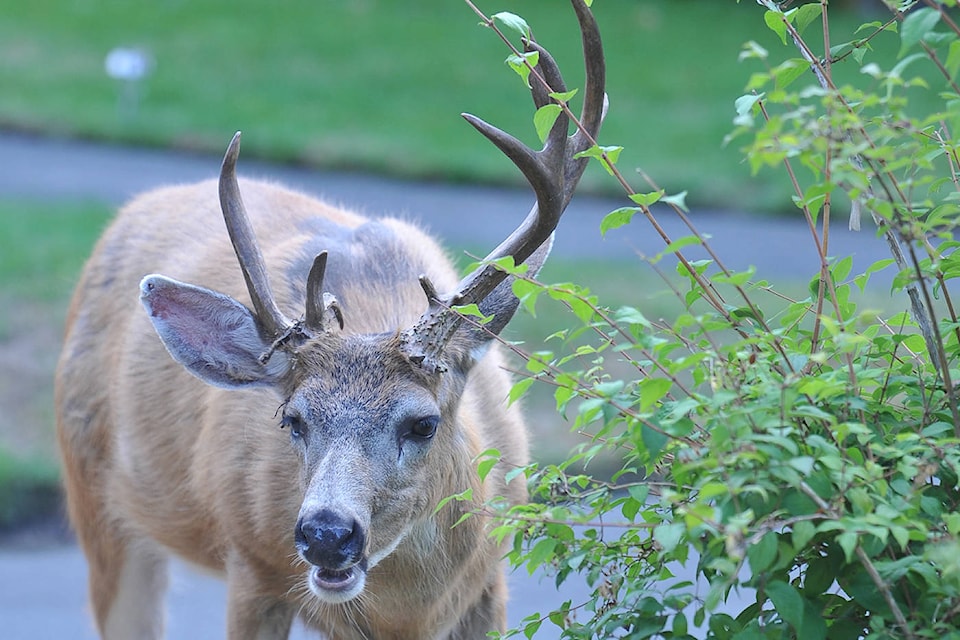Shorter days, rainy nights and raging hormones – all can spell potential trouble for local bucks.
Cooler weather marks the start of rutting season for bucks, which like other hormone-driven creatures, can demonstrate some, ahem, single-minded behaviour when it’s time to go looking for love.
“When their hormones kick in, bucks can lose much of the ‘street sense’ they’ve gained over the previous year. That means that when they catch the scent of a nearby doe, they can quickly run into the road without paying attention to anything else,” explains Kristy Kilpatrick, from the Urban Wildlife Stewardship Society.
It doesn’t help that the unpredictable behaviour coincides with our shorter, darker days and rainy weather, Kilpatrick adds.
With all that’s in mind, here’s a look at some buck behaviour to be aware of this fall:
- Unpredictability: Because bucks and other deer can dart out suddenly, it’s essential that drivers and cyclists pay extra attention, especially in areas deer are known to frequent, and at dawn and dusk when wildlife tends to be more active. Slow down when you see an animal, giving it time and space to safely get out of the way, remembering that lights can further confuse deer and cause them to stop or behave erratically.
- Single-mindedness: While bucks are only interested in other deer, it’s best to keep your distance as you would with any wildlife. You might also see bucks rubbing their antlers on trees and fighting each other – while the behaviour can appear aggressive, they’re really just showing off their strength and superiority as they look for love.
- Flight response: A deer’s natural response to danger is to run, so it’s essential to leave it an escape route far away from you. And because dogs, no matter the size, are perceived as a threat, be sure to keep them on a leash. If you encounter a deer, pull your dog in close to you, stop it barking if possible, and walk away from the deer to give it more distance. At home, always check your yard carefully for deer before letting your dog out.
Esquimalt takes next step forward in deer management
As part of Esquimalt’s ongoing efforts to create a comprehensive, informed approach to urban deer, the township is applying for provincial funding for a deer management program.
Leading the initiative is Dr.Jason Fisher, lead scientist with Oak Bay’s immuno-contraceptive program that is inoculating does to reduce the number of fawns being born.
“Deer roam across the CRD’s many municipal boundaries, looking for food, mates, and space. Urban deer management is a regional issue, so it is gratifying to see Esquimalt start a research program to complement what we’ve learned from Oak Bay. It is a very different urban landscape in Esquimalt, which means the rules for deer are likely different: where they go, why, and what contributes to fawning rates. I look forward to learning so we can recommend how best to manage this deer population.”
For more information about deer initiatives in Greater Victoria and tips to reduce human-deer conflict, visit uwss.ca. Learn more about Esquimalt’s deer management initiatives at esquimalt.ca.
